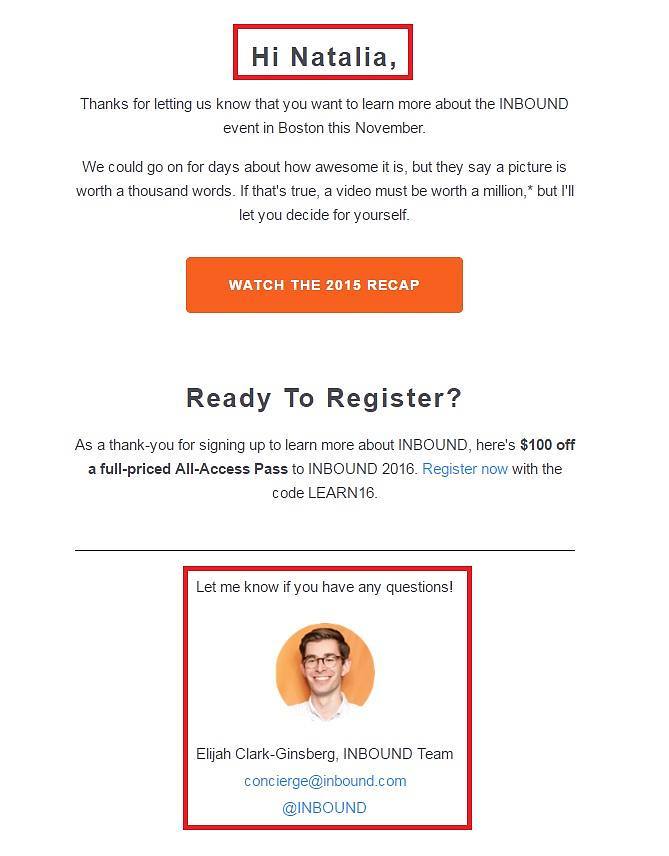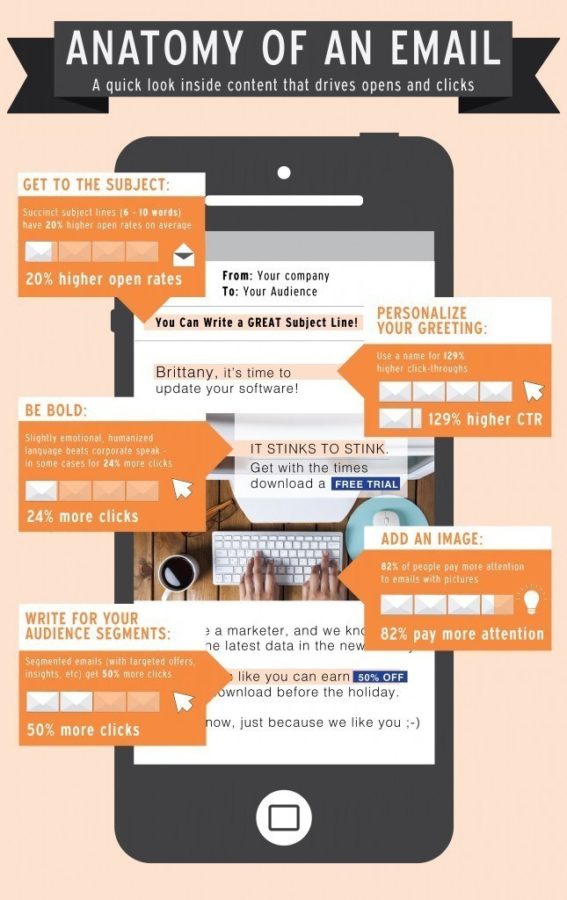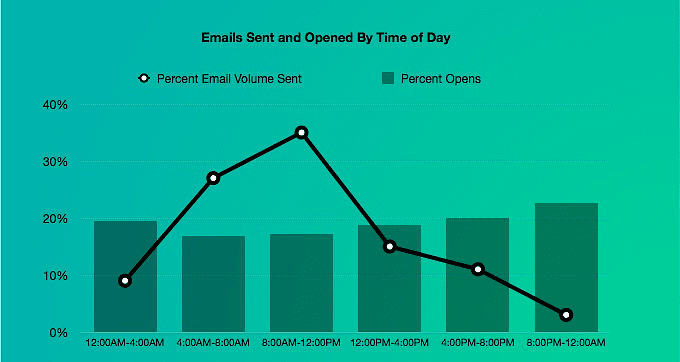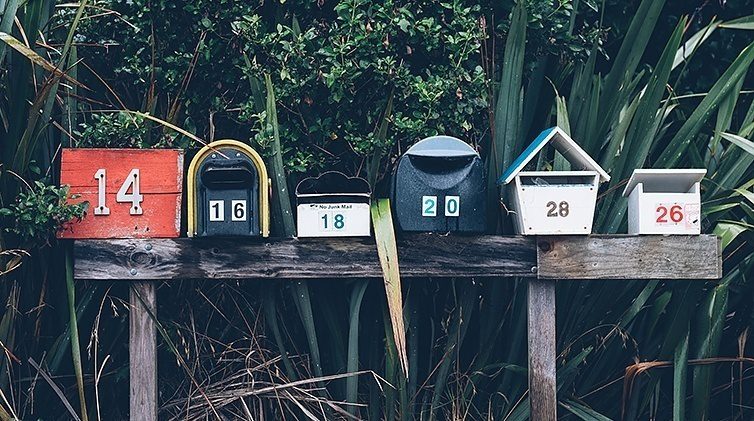Imagine the frustration of entering a store with no clear signage, disorganized shelves, and no staff to guide you. How long would you stay? The same applies to website navigation.
You send hundreds of emails every day, but the effect of your hard work is negligible and the only responses you receive are very unpleasant rejections? If your database is of good quality, it’s likely that it’s your cold mailing strategy that needs to be improved.
Don’t be discouraged by this; although it may take some time, it is certainly worth it. Like Vince Lombardi once said:
“The price of success is hard work, dedication to the job at hand, and the determination that whether we win or lose, we have applied the best of ourselves to the task at hand.”
At Nopio, in order to communicate with potential customers we use an outbound sales platform called Growbots. While it can take some time to master, we have conveniently tried and tested it for you, with some helpful hints and tips to guide you along the way.
Follow these 10 simple rules which have increased our response rate from 10,4% to 28,8% in period of 2 months (but we still work hard for better results). You may find that some of them can be of use in your general emailing strategy. Why not give it a go?
0. Don’t be a spammer
We’ve sneaked in an extra rule as #0 to point out the obvious. This is a basic principle that should be in place for every cold mailer.
Make sure you are creating well-written, personalized emails. Send them to the right customers at the right time and offer value instead of advertising slogans. Cold mailing, when used wisely can be a very powerful sales tool. Write your emails how you would like to receive them yourself and show your recipient due respect.
1. Start with an intriguing title
The subject line is the first point of contact with your recipient and should encourage him to open your message. For this reason, using simple titles like “offer for company X” and giving empty promises, which does not have anything in common with content of your email, are not the best ideas.
Why? Simple titles will not stand out from thousands of others in your recipient’s mailbox. Misleading your recipient is pointless, as he will realise it sooner or later, stop reading, and trash the email. Instead, try to think what would get you to open a message.
You should also keep in mind that over the world more than 500 million people use Gmail. Why is this so important? Gmail allows you to view the first 50 characters of the body of text. So: a clear subject line and intriguing lead sentence can work miracles for you.

2. Personalize
Personalization increases customer engagement. It has been proven that personalized email messages improve click-through rates by an average of 14% and conversions by 10%.
To understand why, try to put yourself in the recipient’s shoes. Would you read a message from an anonymous sender who doesn’t even know your name? Treating your recipient as a complete stranger is certainly not a good way to build trust.
There are a few ways to personalize your emails, such as:
- use the name of your recipient in the greeting, the subject line, and body of message if you can;
- try to use the name of the recipient’s company in the text;
- personalize your brand by signing off with your name, contact details, and an optional photo.
If it sounds natural and appropriate, use all of these tips in any email you send.
Cold mailing can be made more effective with the help of marketing integrations. By leveraging the data and insights provided by such integrations you can tailor your outreach to potential customers and automate the process of sending personalized emails.

Example: personalized email from Hubspot
3. Make sentences short and simple
It’s sad, but true; people usually spend only around 0-3 seconds reading emails (37,88% of people while viewing on desktop, 41.01% while viewing on mobile devices) which means you have a really short time to grab their attention. So what’s the solution to that?
To start with, you need to keep your message as condensed as possible – a recommended length of your message is 5 sentences. Secondly, you should use simple language. Complex and long sentences require more focus to read through.
Boomerang recommends to write like a 3rd grader with plenty of emotion; slightly positive or negative emails gain 10-15% more responses than neutral ones.
Find it hard to believe? Check out this infographic:

4. Use formatting
Your emails should be scannable: upon glancing at your email, the reader should understand the topic and be able to pick out the most important information.
These tricks should help you:
- put gaps between sentences to make them more readable;
- use bullets to present list of information;
- put keywords in bold that you want to emphasize;
- be careful with typos.
5. Present values, not assets
You can spend hours describing your company’s assets, but your recipient probably doesn’t care about that at all. The thing that you need to present is a value you may add if they decide to talk further with you. What can they gain? How can you help them?
Try to avoid sales words, as they can discourage from reading further and attract spam filters (you can look through the list of email spam words by Hubspot).
You should be careful as well with words that might have negative connotations. If you have to use them, try to find better sounding substitutes. For example:
| contract | agreement |
| problem | challenge |
| cost | total investment |
6. Send emails at the right time
Your recipient is also a human being who eats, sleeps, and enjoys free time at the weekend. Keep that in your mind when sending emails and pay attention to the time (especially when your recipient works in different time zone).
There is a lot of research on what day and hour scores highest open and response rates. In fact, everything depends on your audience and you should test yourself what sending time provides the best results.
Most research concludes that:
- recommended days are Tuesday, Thursday and Friday;
- the best time is in the morning or after a lunch – when the recipient’s inbox is not full of new messages (around 10 am proved successful for us).

Source: customer.io
7. Follow up
Follow up, follow up, follow up! Do not stop at one message. Plan a cadence of a few emails and send them with reasonable time breaks. According to Yesware research, after your first message goes unanswered, a follow-up gives you a 21% chance of reply. The next follow-ups then give you a 25% chance of reply. Just like we said, cold mailing is all about patience.
If you need more persuading, the same research states that 70% of sales emails stop after sending one message. Guess what? That is a point where you can gain a competitive advantage.
8. Use a clear CTA
What is the main aim of your email? In cold mailing case it is probably a call or meeting with your potential customer. What will bring you a step closer to achieving your goal is a clear call to action. Leave your recipient a plain task to do after he finishes reading your email.
According to The Complete Handbook of Cold Mailing by Growbots, you can use two different strategies:
- Keep it open – ask a polite question such as “Do you have time for a call anytime soon?”
- Push on date – propose a concrete time of call: “How about a call on Tuesday after 2pm?”
9. Make sure you are talking to the right person
Your efforts might be completely wasted if you don’t address emails to decision makers. Don’t email assistants or secretaries, as usually they do not have anything in common with your product or service. In small companies it’s better to talk to the CEO or Director of the right department.
If you are not sure who should be your recipient, ask politely if you can be redirected to the right person.
10. Try different techniques
There is no uniform technique that works with all business types. While the internet is full of cold mailing templates, you should not use them blindly. Try different forms of messages and track the results for each of them. You will then be able to choose the best one and edit it accordingly.
Of course it may take some time, but experimenting is way better than standing still. “Patience is bitter, but its fruit is sweet.” said Jean-Jacques Rousseau, and he couldn’t be more right.
We hope you enjoyed this article and that our simple rules will help you become a cold mailing master. Do you have something to add to the list? Leave a comment below.






